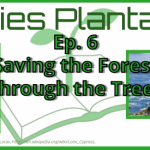10 things you might not know about ASPB publications
 The ASPB pubs department has a blog! It’s not surprising you didn’t know this #1 fact because this post is our first! But now that you know, you should check back here often to learn more about Plant Direct, Plant Physiology, and The Plant Cell. You will hear from our publications staff, our authors, our editors-in-chief, and many other voices. Stay tuned and find the blog at https://plantae.org/research/pubspages/!
The ASPB pubs department has a blog! It’s not surprising you didn’t know this #1 fact because this post is our first! But now that you know, you should check back here often to learn more about Plant Direct, Plant Physiology, and The Plant Cell. You will hear from our publications staff, our authors, our editors-in-chief, and many other voices. Stay tuned and find the blog at https://plantae.org/research/pubspages/!
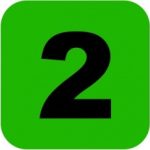
 Social media shares. ALL ARTICLES published by Plant Direct, Plant Physiology, and The Plant Cell are shared on the journal social media accounts. This raises visibility, gives authors a “shareable nugget,” and boosts Altmetric scores. Follow along @PlantDirectJ, @PlantPhysiol, and @The Plant Cell. #SupportingYourResearch
Social media shares. ALL ARTICLES published by Plant Direct, Plant Physiology, and The Plant Cell are shared on the journal social media accounts. This raises visibility, gives authors a “shareable nugget,” and boosts Altmetric scores. Follow along @PlantDirectJ, @PlantPhysiol, and @The Plant Cell. #SupportingYourResearch
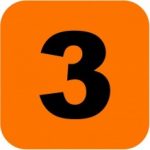
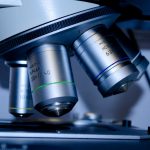 Our editorial boards are made up of practicing scientists. Each journal’s ed board is led by an editor-in-chief. Editorial board members are crucial volunteers who steer journal editorial policies, work with our pubs to ensure timely publication of peer-reviewed articles, and propose innovative ways of presenting research (think Registered Reports for Plant Direct, publication of peer review reports for The Plant Cell, and exciting subject area-based Focus Issues throughout each year for Plant Physiology).
Our editorial boards are made up of practicing scientists. Each journal’s ed board is led by an editor-in-chief. Editorial board members are crucial volunteers who steer journal editorial policies, work with our pubs to ensure timely publication of peer-reviewed articles, and propose innovative ways of presenting research (think Registered Reports for Plant Direct, publication of peer review reports for The Plant Cell, and exciting subject area-based Focus Issues throughout each year for Plant Physiology).
 Eleven full-time ASPB staff members devote their time to the journals. One publishing director, one managing editor, two production managers, two peer review managers, one The Plant Cell senior features editor, one features editor splitting time between The Plant Cell and Plant Physiology, one publications assistant, one subscriptions manager, and one subscriptions assistant all work together to get our authors’ important work published.
Eleven full-time ASPB staff members devote their time to the journals. One publishing director, one managing editor, two production managers, two peer review managers, one The Plant Cell senior features editor, one features editor splitting time between The Plant Cell and Plant Physiology, one publications assistant, one subscriptions manager, and one subscriptions assistant all work together to get our authors’ important work published.
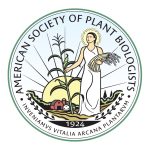
 Authors benefit from ASPB membership. Member authors who publish in Plant Physiology receive free open access, and The Plant Cell member authors receive discounted open access (fun fact: Plant Direct is a fully open access journal). ASPB is a nonprofit, self-publishing society. All proceeds from our journal are reinvested in the community.
Authors benefit from ASPB membership. Member authors who publish in Plant Physiology receive free open access, and The Plant Cell member authors receive discounted open access (fun fact: Plant Direct is a fully open access journal). ASPB is a nonprofit, self-publishing society. All proceeds from our journal are reinvested in the community.

 Notable dates. Plant Physiology launched in 1926. It’s the same age as naturalist and presenter David Attenborough. Also in 1926, Fritz Went reported the discovery of auxin. The Plant Cell launched in 1989. It’s the same age as Taylor Swift, Gareth Bale, Nintendo Game Boy, and the World Wide Web. Also in 1989, the Berlin wall came down, and Japan’s emperor Hirohito died. Plant Direct launched in 2017, the same year that Donald Trump took office. The 2017 Atlantic Hurricane season was the costliest and one of the deadliest on record, and the single largest one-day march in Washington DC also took place, the Women’s March.
Notable dates. Plant Physiology launched in 1926. It’s the same age as naturalist and presenter David Attenborough. Also in 1926, Fritz Went reported the discovery of auxin. The Plant Cell launched in 1989. It’s the same age as Taylor Swift, Gareth Bale, Nintendo Game Boy, and the World Wide Web. Also in 1989, the Berlin wall came down, and Japan’s emperor Hirohito died. Plant Direct launched in 2017, the same year that Donald Trump took office. The 2017 Atlantic Hurricane season was the costliest and one of the deadliest on record, and the single largest one-day march in Washington DC also took place, the Women’s March.
 Open peer review. Two of our journals publish peer review reports. Plant Direct publishes peer review reports for each article as a condition of publication. For The Plant Cell, if both authors and reviewers of an article agree, peer review reports are published. These reports can be found online accompanying the articles.
Open peer review. Two of our journals publish peer review reports. Plant Direct publishes peer review reports for each article as a condition of publication. For The Plant Cell, if both authors and reviewers of an article agree, peer review reports are published. These reports can be found online accompanying the articles.
![]() Assistant Features Editors. Starting in 2018, Plant Cell and Plant Physiology have appointed early-career scientists to their editorial boards as Assistant Features Editors (AFEs). AFEs gain editorial and writing experience by attending ed board meetings and writing summaries, News and Views, In Briefs, profiles, and other content for the journals.
Assistant Features Editors. Starting in 2018, Plant Cell and Plant Physiology have appointed early-career scientists to their editorial boards as Assistant Features Editors (AFEs). AFEs gain editorial and writing experience by attending ed board meetings and writing summaries, News and Views, In Briefs, profiles, and other content for the journals.
 ASPB Journal Miles program. This program was created to recognize the contributions of our reviewers to the plant biology community. For each article reviewed, a reviewer receives “Journal Miles.” These miles can be redeemed for merchandise and, most importantly, ASPB membership. If a reviewer already is a member, s/he can redeem the miles for a colleague to become a member, too.
ASPB Journal Miles program. This program was created to recognize the contributions of our reviewers to the plant biology community. For each article reviewed, a reviewer receives “Journal Miles.” These miles can be redeemed for merchandise and, most importantly, ASPB membership. If a reviewer already is a member, s/he can redeem the miles for a colleague to become a member, too.
![]()
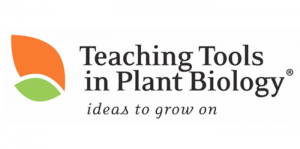 Teaching Tools in Plant Biology is a publication of The Plant Cell. Teaching Tools covering more than 40 topics (so far) have been produced on diverse topics in plant science, for use in teaching or self study. Teaching Tools are free to read and download and can be accessed through The Plant Cell or Plantae.org.
Teaching Tools in Plant Biology is a publication of The Plant Cell. Teaching Tools covering more than 40 topics (so far) have been produced on diverse topics in plant science, for use in teaching or self study. Teaching Tools are free to read and download and can be accessed through The Plant Cell or Plantae.org.
 We would love to hear from YOU! What are your favorite things about ASPB’s journals? How could we improve? Continue the conversation in the comments! Also, please share your ideas for future Pubs Pages posts with us!
We would love to hear from YOU! What are your favorite things about ASPB’s journals? How could we improve? Continue the conversation in the comments! Also, please share your ideas for future Pubs Pages posts with us!
Mary Williams, Features Editor, The Plant Cell and Plant Physiology
Jennifer Regala, Managing Editor, The Plant Cell and Plant Physiology



